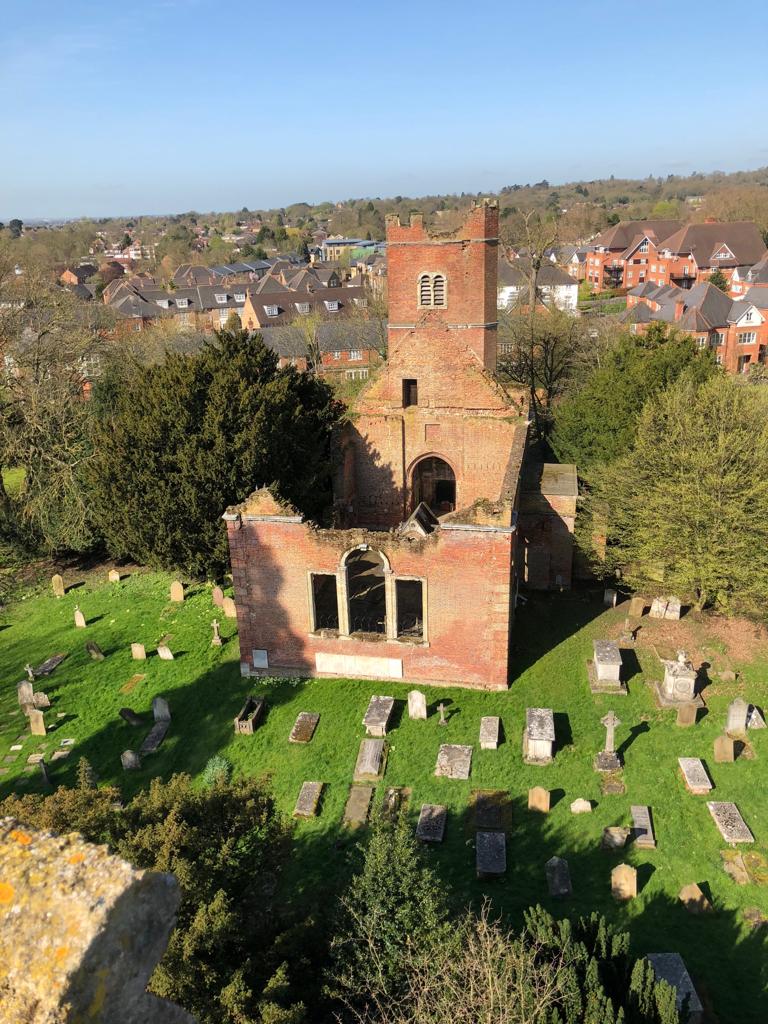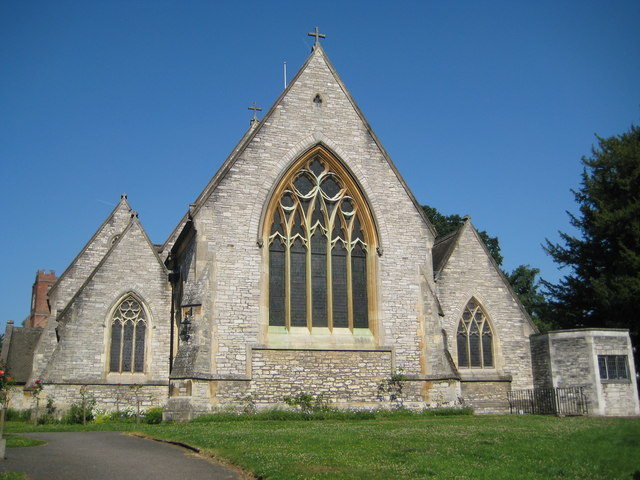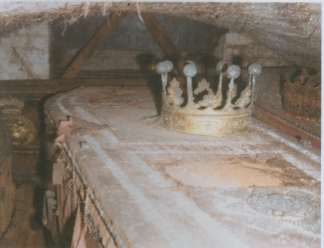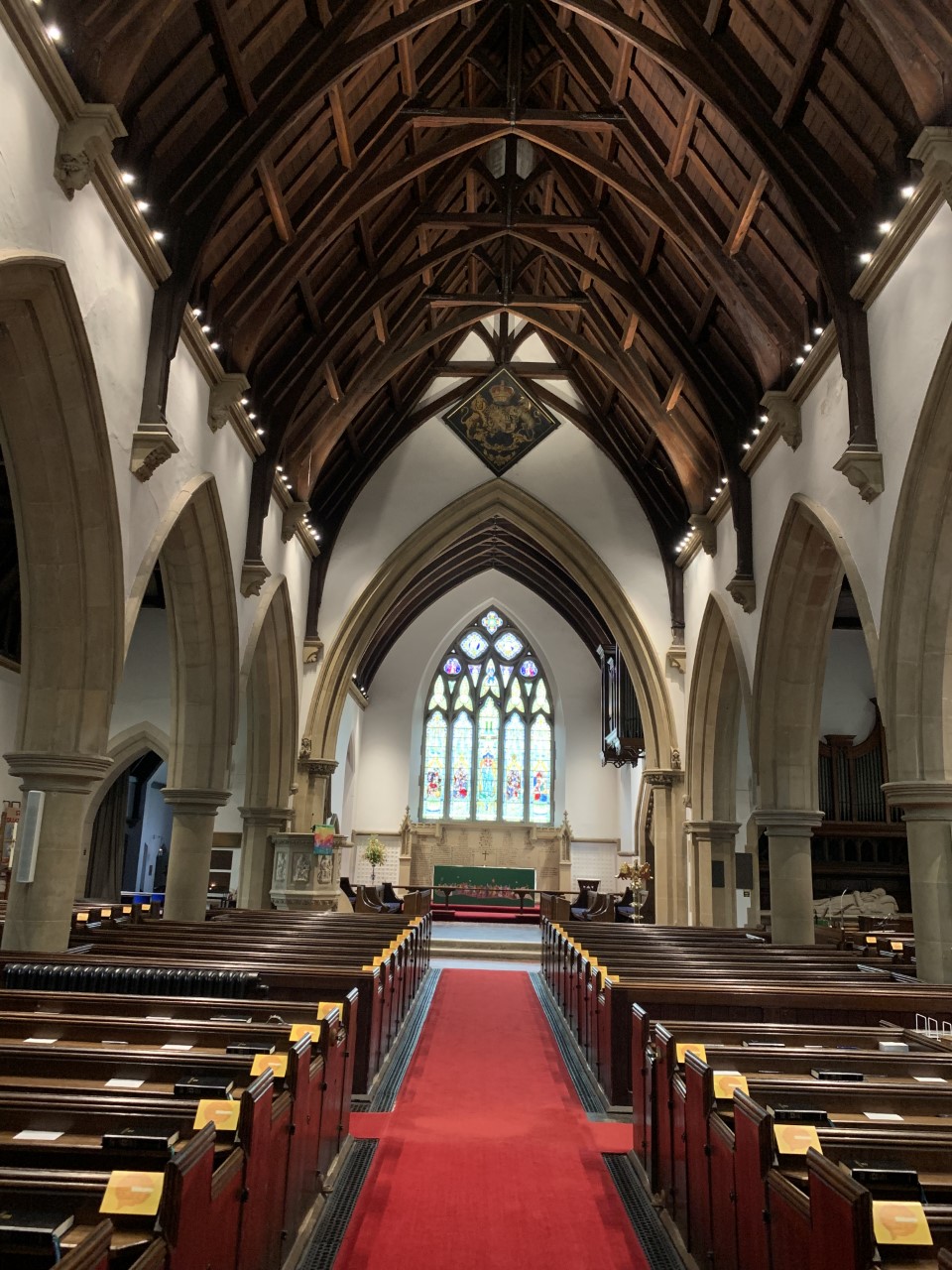The History of St John's
The Earliest Church
In the sixth century the Saxons conquered London. Travellers along the road to St Albans would see the ruins of 'Sulloniacis' - the 'Stones by the Mere'. Over time the Saxons built a church in what is now called Old Church Lane.
Saint Mary's Church
The Saxon church was replaced on the same site, by a Church dedicated to Saint Mary. This Church possibly dated from the 14th Century. Over the years the centre of the village moved northwards from the old Manor House to the main London to Watford road. As a consequence the replacement Church was built nearer the new village centre.
After Saint Mary's Church came the Brick Church dedicated to Saint John the Evangelist, which now stands in ruins alongside the present Church. Sir John Wolstenholme paid for the building, and Mrs Barbara Burnell, Sir Thomas Lake and Mr Robinson, Church Warden, gave the land. It was consecrated by William Laud, then Bishop of London. In his Diary for 1632 he wrote, "Julii 17, Tuesday, I consecrated the church at Stanmore Magna in Middlesex, built by Sir John Wolstenham". After the Civil War, William Laud, then Archbishop of Canterbury, was put on trial for High Treason. Three instances of chapel consecrations, (considered a papist tradition), were amongst the charges put to the Archbishop, the second of which was "..a Chappel of Sir John Wolstenholme's Building". Laud replied "'Tis true I consecrated that too, but that was a parish Church, Built in the place where he was born, and it was in my Diocese, and so the work was proper for me". But all his protestations were in vain, Archbishop William Laud lost his head on Tower Hill scaffold on 10 January 1645.

The Present Church
On 16th July, 1850, the Bishop of Salisbury (in the absence of the Bishop of London) consecrated the present church. Colonel Hamilton Tovey Tennent, who lived at Pynnacles, a large house in Green Lane, which was burnt down in 1930, gave the field upon which it was built. The Earl of Aberdeen laid the foundation stone in the presence of Queen Adelaide. This was the last public appearance of the Queen Dowager, who was then living at Bentley Priory, a fine mansion on the Great Stanmore/Harrow Weald border.
The new church cost £7,855 0s. 3d. Of this sum, the Rector, the Honorable and Reverend Douglas Gordon, Lord Aberdeen's son, gave £1,000. Lord Aberdeen himself gave £2,000, a Church Rate produced £3,000 (this had to be underwritten by the Churchwardens) and the remainder came from subscriptions, including one of £300 from Miss Martin who lived at Woodlands, Stanmore Hill. Colonel Tovey Tennent also gave the clock and the carved chairs in the chancel, and the Rector's future wife, Ellen (daughter of the sixteenth Earl of Morton), gave the stone boot scrapers at the doors.

The architect of Great Stanmore's third church was Henry Clutton (1814-1895) of Hartswood, near Reigate, Surrey. He should not be confused with another Henry Clutton (1819-1893) who was practising at the same time. The church is built of Kentish rag and Bath stone in the Early Decorated Gothic style of the mid-nineteenth century.
The 'Brick Church', 1851 Onwards
Following the opening of the present church in 1850 the old Brick Church of 1632 was no longer used, the services now being carried out in the "New Church". The Brick Church remains consecrated to this day and is still used occasionally for services. On 24th February, 1851, a faculty for "taking down the said ancient Parish Church of Saint John the Evangelist" was obtained. The material would be sold to offset the cost of the new Church. Demolition commenced with the removal of the roof and part of the south wall, but a strong local outcry brought it to a halt. The brick church was no longer maintained and was left and became a picturesque ruin covered in ivy with the nave being used burials. By coincidence, a similar situation happened at Ewell, Surrey (our prototype' church). Their old church was all but demolished, save for the fifteenth century flint tower, which survives in the same churchyard.
The Brick Church was Grade II listed in 1951, but this important example of Stuart-period brick construction was still in danger. The elements and, unfortunately, vandalism were taking their toll. It was not until 1989 that help arrived: English Heritage promised financial support and advice to 'consolidate' the ruin, that is, to make it safe without substantial changes. The Great Stanmore Old Church Working Group was formed; it appointed architects and builders, and appealed for funds. Donations came from many sources, including Her Majesty Queen Elizabeth the Queen Mother and Her Royal Highness the Princess Royal.
Volunteers commenced killing and removing the ivy, and the architect reported on the condition of the building. The original structure is massive, with brickwork 2 feet 6 inches thick, and it was not in danger of falling down. Even the cracked and leaning bell tower was considered to be "now at rest". But the ruin was in need of extensive repair work and consolidation to make it safe.
In 1991, with sufficient funds promised, the builders and masons moved in. Work progressed well, and on the 360th anniversary of the church's dedication, a special service was held inside the ruin. On 17th July, 1992, Dr. David Hope, then Bishop of London, led the congregation in prayers of thanksgiving for the consolidation of the Brick Church. Among those present were the Duke of Abercorn and the Marquess of Aberdeen, the latter unveiling a plaque of Peterhead granite, in memory of members of the two families who are buried in the Bentley Priory vault on the north side of the ruin. It was here, during the consolidation work, that the missing coffin of the fourth Earl of Aberdeen, George Hamilton Gordon, was discovered.

The Coffin of George Hamilton Gordon KG, KT, fourth Earl of Aberdeen, Prime Minister from 1852 to 1855 rests in the Bentley Priory Vault. Identification is by the coronet of an Earl and bottom right the insignia of the Knight of the Ancient Order of the Thistle of Scotland.
© Copyright Dr Freddie Hicks
Most of the important memorials were moved from the Brick Church to the present church in 1850, and for this reason the present church was Grade 11* listed in 1983. Under the tower of the Brick Church, however, some tablets worthy of note remain in position, especially those of the Drummond family who lived at Stanmore Park. Andrew Drummond (died 1769) was the founder of Drummond's Bank at Charing Cross (now the Royal Bank of Scotland). The four John Wolstenholmes associated with Great Stanmore are buried in the vaults under the east end of the Brick Church. There are, however, only two tombs, that of Sir John (the son) who built the church, and that of his father who was originally buried at Saint Mary's. There is no memorial to Sir John the grandson.
This Sir John was Member of Parliament for West Looe, Cornwall, and like his father, was a Commissioner of the Customs and a royalist. In the year following the outbreak of the Civil War, Parliament removed Sir John (the grandson) from the Cocket Office (on 21st October, 1643). He had been keeper of the Custom House seal, commonly called the Cocket Seal, for the Port of the City of London. The House of Lords and the House of Commons were still at odds over the sequestration of his estate three years later!
After the Restoration in 1660 Charles II returned Sir John to his customs post, and he managed to recoup some of his losses. He is mentioned by Samuel Pepys in his diary (5th September, 1662). Lysons quotes from the parish registers (in Latin) that John Wolstenholme (the grandson) was buried "next to his father's monument on 15th July, 1670". His father's monument, of course, is now in Saint George's Chapel in the present church.
This information has been taken from the book "A Brief History and Guide" by kind permission of the Editor Mr Peter G Scott.
